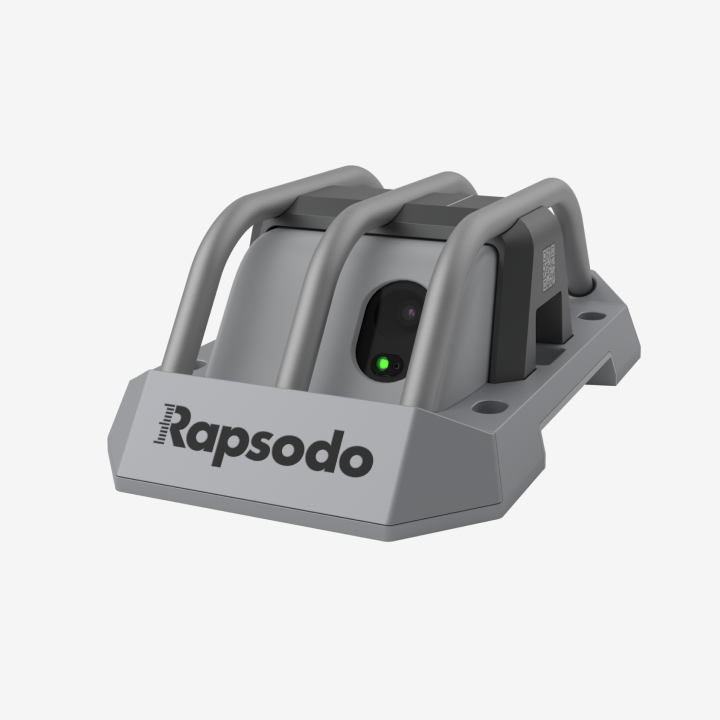The following article was written from a pitching coach's perspective. Cole Newell (@CNPitching on Instagram) is a pitching coach who specializes in helping young and established pitchers enhance their game and uses Rapsodo PITCHING 2.0 with his pitchers.
There are thousands of ways to throw an effective changeup. It takes time and repetition to find a grip that is comfortable + effective. Over time, with consistent repetition, we can develop a pitch that we will be able to throw in any count. We focus on finger placement, finger pressure, and additional pronation. The additional pronation works for some pitchers who struggle with throwing a flat changeup.
Pitch design is different for everyone but there typically become similar characteristics between a good changeup and one that is less effective. I have a few baseline metrics I like to look at to see where we are and where we can go with the Changeup.
Spin Direction:
Spin direction plays a big role in what type of horizontal movement we are going to get. The more tilt we achieve, typically the more horizontal movement. We can even conclude and incorporate SSW depending on seam placement at release. More to come on this!
The spin of the changeup is critical to creating drop and run on our pitch. A lower spin rate will help with decreasing the velocity for an optical illusion compared to our fastball velocity, The most ideal spin direction for a changeup would create dead sideways spin. Preventing the ball from creating any backspin and lift, which is what our fastball does, (Magnus Effect). Creating the sideways spin is difficult to achieve, but it aids in maximizing drop and runs when thrown correctly. Creating the side spin on the ball comes down to finding what works for you the best.
Let's dive into two cues that baseball's best use! One cue is finding a way to get our fingers, most importantly our ring finger, close to the side of the ball at release. We have seen a correlation to more efficient side spin. Pitchers like Devin Williams do this as it closely falls in line with forcing pronation rather than naturally pronating. We call this, "Throwing Your Thumb". You'll also see guys who use the split change grip (vulcan split grip with space between middle and ring finger) to help increase side spin.
These are two examples of changeups and how both get similar spin directions but in different ways. We have to consistently repeat our mechanics to create a feel and understanding of how our pitch moves and what we need to do to decrease the spin and velo as well as manipulate the spin direction to be like flying saucers and not like a fastball.
Movement:
The vertical and horizontal movement metrics are really fun to watch and play with. We don’t want to see lift, or a higher number, on the vertical number because we want our changeup to drop near as it approaches the zone. With horizontal movement, anything above 18 inches is a solid benchmark to show your changeup runs like crazy. Identifying where you are currently and against the average, you can then identify where improvement is needed.
Movement does vary based on seam orientation, arm angle, grip, and more.
The average movement between MLB pitchers is 10” of vertical break and 15” of horizontal break.
Spin Rate:
We hear “kill the spin” often. But, if we can tilt the spin, we can get away with more spin - which creates some deception with our FB. High spin, low tilt, we will see lift like our FB which creates an ineffective changeup.
The average spin rate between MLB pitchers on Rapsodo is 1700-1800 RPMs.
Velocity:
Is our changeup slower than our FB? The average changeup runs about 8.5 mph slower than the FB, creating good deception. This was a touch-and-feel bullpen so we may see more difference with higher intent. The majority of the time our changeup should be slower than the fastball or we are just throwing a sinker-like pitch.
I love leveraging this data that helps paint a better picture for us mixed with feel and comfort. All can enhance your game on the mound!
The average velocity for MLB pitchers on Rapsodo is 84.7 for right-handers and 83.3 for left-handers.
Another helpful tip is implementing a changeup catch every single day. This does not have to be 100 or more throws but simply 10 to 20 throws at an extended distance.
Don’t get frustrated early in the development of a changeup. It is an extremely difficult pitch that even those at the highest level have issues. Gain a feel for your grip, release, and continue to work on it until you have built the confidence to throw it in any situation and count.
Want to learn more about Rapsodo? Get connected with our experts to take your game or program to the next level!















